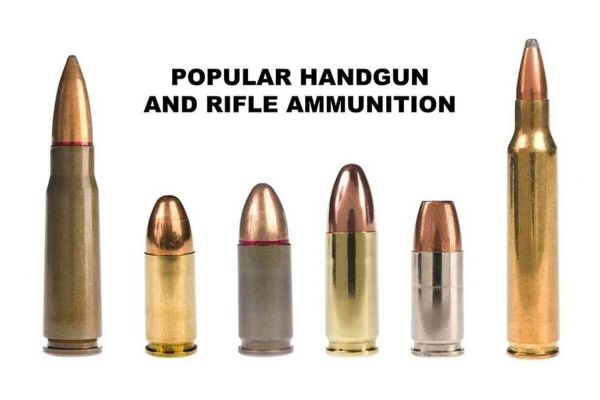Understanding the most popular pistol and rifle ammunition calibers is essential for any firearm enthusiast, whether you're a seasoned shooter or new to the sport.
Each caliber serves a unique purpose, offering different benefits and performance for specific situations.
From target shooting to self-defense, knowing which ammo works best for your firearm can make all the difference in terms of accuracy, safety, and effectiveness.
In this Firearm Blog Article, we'll explore some of the most commonly used ammunition in the United States, breaking down their intended uses and why they've become so popular.
By gaining a deeper understanding of the different calibers available, you'll be better equipped to make informed decisions for a successful and safe shooting experience.
Popular Pistol Calibers
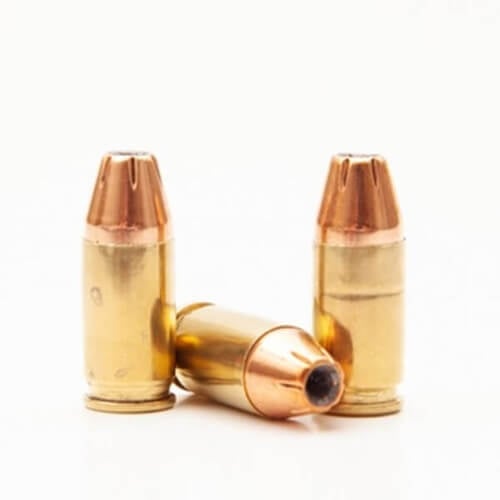

.380 ACP Ammunition
The .380 ACP caliber was designed by legendary arms and ammunition designer John Moses Browning in 1908.
The ACP in 380 ACP stands for Automatic Colt Pistol, as it was designed for the Colt Pocket Hammerless. 380 ACP is known by a few names, like 380, 9mm Short, and 9mm Kurz.
The 380 ACP’s design allows it to be used in small, blowback operated pistols.
Blowback operated guns tend to be reliable, cheaper to produce and they allow the barrel to be fixed for greater accuracy.
The 380 ACP cartridge was fairly popular until the end of World War 2. After World War 2 service handguns trended towards 9mm and 45 ACP.
The 380 ACP was used for popular smaller handguns like James Bond’s Walther PPK.
The 380 ACP gained a massive uptick in popularity due to the rising popularity of concealed carry. 380 ACP allowed you to make very small, but reliable handguns that are easy to carry.
The 380 ACP gained enough steam that there are presently tons of defensive options available for it.
The 380 ACP is a good choice for concealed carry or in a backup gun due to the small size of the guns, and the potency of the 380 ACP.
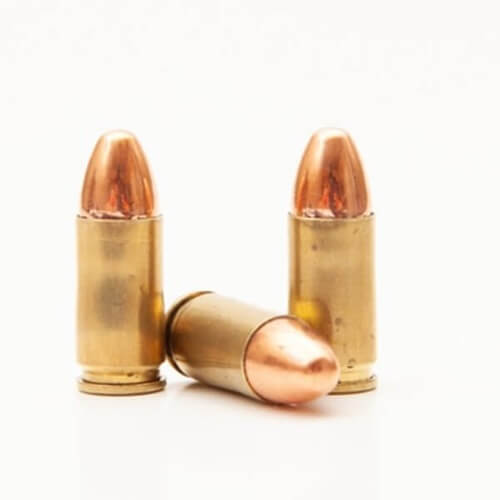

9mm Ammunition
It’s known by many names, the 9mm Parabellum, the 9mm Luger, the 9mm NATO, or simply 9mm.
The 9mm caliber is one of the most popular centerfire handgun calibers of all time.
Created in 1902 by George Luger for the famed Luger automatic pistol the 9mm has come a very long way over its life.
The 9mm started as a German military cartridge for a single handgun and slowly has become the round of choice for western military and police forces as well as civilians.
The 9mm offers shooters an excellent compromise between size and ballistic ability.
The 9mm offers users a high magazine capacity in duty or full sized weapons and allows small concealed carry handguns to remain small and easily carried.
Shooting 9mm is pleasant and the round recoils very little.
This makes it a great choice for concealed carry.
As ballistic technology improved the 9mm is a round that benefitted greatly.
Defensive ammunition in 9mm is potent and capable of stopping threats in an instant.
9mm is a great round for self-defense, plinking, and competition.
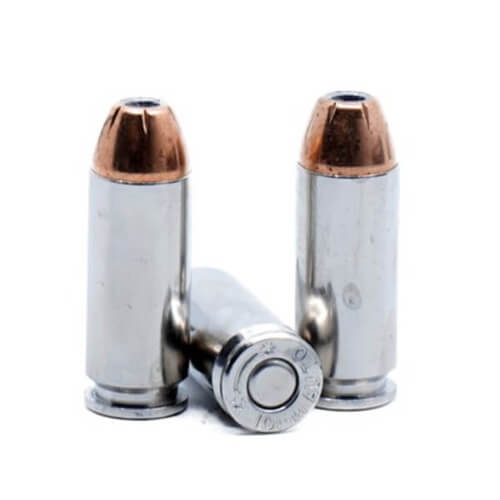

10mm Ammunition
The 10mm automatic is one of the most potent and capable defensive handgun cartridges ever designed.
The 10mm caliber was designed by famed firearms instructor Jeff Cooper and ammunition manufacturer Norma.
The 10mm was originally adopted by the FBI as a response to a tragic FBI shootout in 1986.
The 10mm is an exceptionally powerful automatic cartridge that is well suited for law enforcement and defensive use.
It’s smaller in diameter than the .45 ACP and more potent than the 40 S&W.
It performs better against intermediate barriers than 357 SIG and 40 S&W. Its size gives users a relatively high capacity in a double stack pistol.
Some loads of the 10mm are capable of exceeding standard 357 Magnum loads.
The 10mm did not serve very long with the FBI due to what they called excessive recoil.
In Denmark, the elite Sirius Patrol is issued 10mm handguns to deal with hungry wildlife in their home country.
The 10mm still has a cult following with those looking for a powerful and very versatile round.
The 10mm can be and is used for self-defense, target shooting and even hunting.
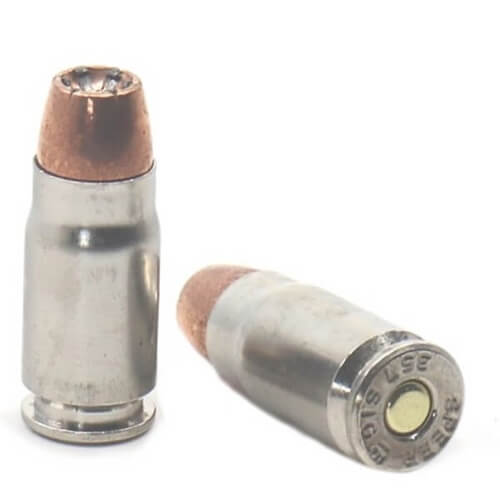

.357 SIG Ammunition
The 357 SIG round was produced by the famed pistol company SIG Sauer in 1994 to directly compete with the 40 S&W.
The .357 SIG round utilized brass from the 10mm that is trimmed and necked down to a 9mm projectile.
The goal of the 357 SIG was to replicate the performance of the famed 357 Magnum but in an automatic pistol.
When the .357 SIG utilizes a 125-grain projectile it does reach the same performance of the .357 Magnum.
In an automatic this allows the shooter to have up to 15 rounds of ammo equivalent to a 357 Magnum.
The 357 SIG is a very potent and powerful round, especially when barrier penetration is a concern.
The 357 SIG is an effective round that has been adopted by numerous law enforcement agencies.
This includes the Federal Air Marshals, the Texas Rangers, and the United States Secret service.
The 357 SIG never achieved the popularity of the .40 S&W but does serve in some of the most demanding law-enforcement positions in the world.
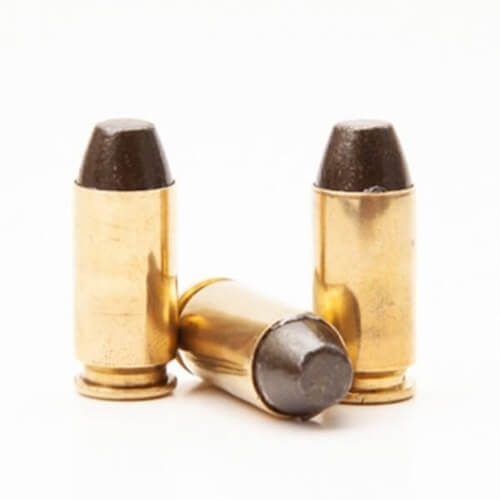

.40 S&W Ammunition
The 40 Smith and Wesson is a rather young round that gained massive popularity in the 1990s.
40 S&W also called .40 Caliber ammo was a round designed specifically for Law Enforcement.
Smith and Wesson used the 10mm cartridge as a base and in 1990 downsized it into the 40 S&W.
At the time police forces were looking for a modern caliber to handle their specific duties better than the 38 Special, 9mm, and 45 ACP.
The 40 S&W proved to be a good compromise of ballistic power and capacity.
The round was proven to be more capable of penetrating light and hard barriers and maintaining a significant ballistic force to stop a threat.
The 40 S&W is a better round when the shooter is concerned about shooting through glass, car doors, or intermediate wooden barriers.
The 40 S&W also maintains a relatively small grip profile while holding almost the same amount of rounds as a 9mm.
The 40 S&W also has a good following as a concealed carry round that is powerful but allows a weapon to remain compact.
If you need a round that never says quit then the 40 S&W maybe perfect for you.
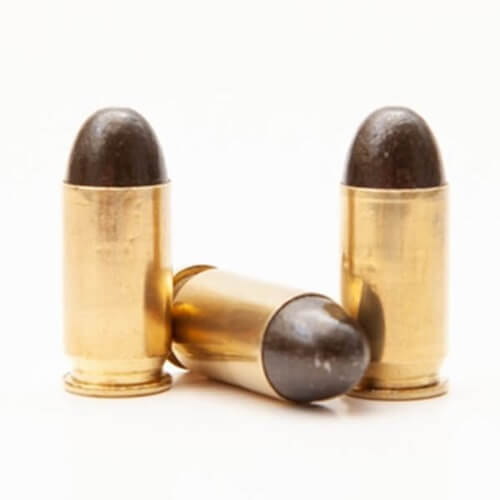

.45 ACP Ammunition
No handgun cartridge in the world is more American than the 45 ACP.
The 45 ACP caliber was created by John Moses Browning for a series of handguns that would eventually lead to the 1911 automatic pistol.
Popular models include:
ACP stands for Automatic Colt Pistol because John Browning was working for Colt at the time of its design.
The 45 ACP and by extension the 1911, were designed to modernize the United States military and replace their old, anemic 38 revolvers.
The 45 ACP proved to be a capable and powerful round and served with distinction from 1911 to 1985.
It still serves in a limited role with some Special Operations forces.
Most .45 ACP loadings are naturally subsonic. This means they are an excellent option for suppressed firearms.
The 45 ACP is a big bullet that creates a big hole in whatever you shoot.
The 45 ACP has surprisingly low recoil impulse for its size, making it pleasant to shoot in most handguns.
The .45 ACP is a classic American cartridge that remains popular for over a century for a reason.
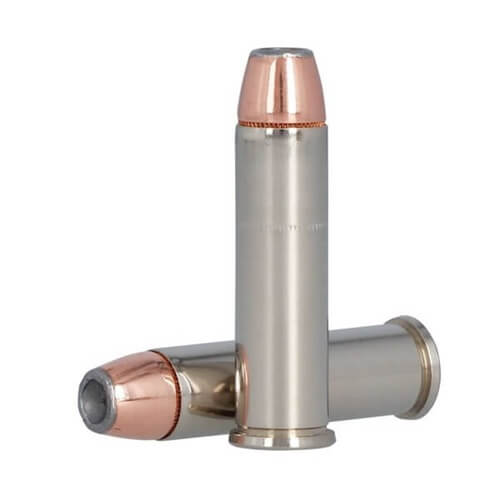

357 Magnum Ammunition
The 357 Magnum is the first Magnum cartridge ever created and started a new hype around powerful cartridges in the United States.
The .357 Magnum caliber is a round created for defensive purposes in the time where the 38 Special was the most popular caliber for police use.
The 357 Magnum was created by Elmer Keith, Phillip Sharpe, and D.B. Wesson.
At the time the 357 Magnum was easily the most potent self-defense revolver cartridge on the market.
The 357 magnum outperformed the 38 Special in every way.
The round became popular with law enforcement, especially Highway Patrol units during the dust bowl and prohibition.
The 357 Magnum is a powerful cartridge that uses the same projectile as the 38 Special and a slightly longer case.
The case length is different, but 38 Special can be fired safely in a 357 Magnum revolver.
357 magnum is a popular caliber for concealed carriers due to compact, or snub nose, revolvers.
These small revolvers are easy to carry but are chambered in a powerful cartridge perfectly suited for self-defense.
The 357 Magnum has remained popular because it is the dominant combat revolver round.
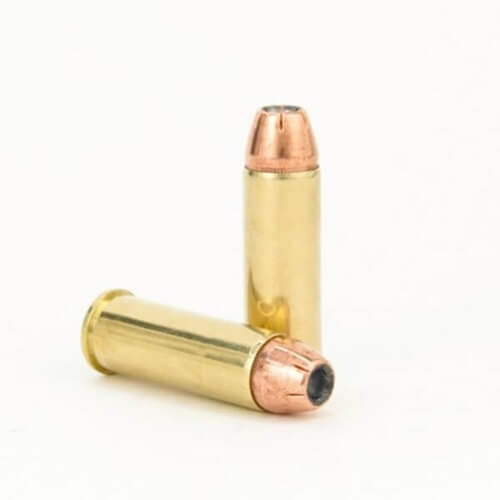

44 Magnum Ammunition
The 44 Magnum is what results when a famed revolver shooter is willing to blow up a few guns.
That .44 Magnum caliber was created by Elmer Keith while partnered with Smith and Wesson.
Elmer Keith spent years hot-loading 44 Special rounds, and yes he did destroy a number of revolvers.
Elmer Keith worked with Smith and Wesson to develop the revolver and worked with Remington to develop the new cartridge.
In 1955 it was the most powerful production cartridge in the world and remained that way until the 454 Casull became a production cartridge in 1997.
The 44 Magnum proved itself as a powerful cartridge that was well suited for hunting medium to large game.
The 44 Magnum was moderately popular with big bore revolver shooters but became a household name after Inspector Callahan carried the round in the famed Dirty Harry film.
The .44 Magnum made its ways into revolvers, a variety of rifles, and even a few automatic handguns.
The 44 Magnum may not be the most powerful cartridge in the world, but it remains a very capable round.
Popular Rifle Calibers
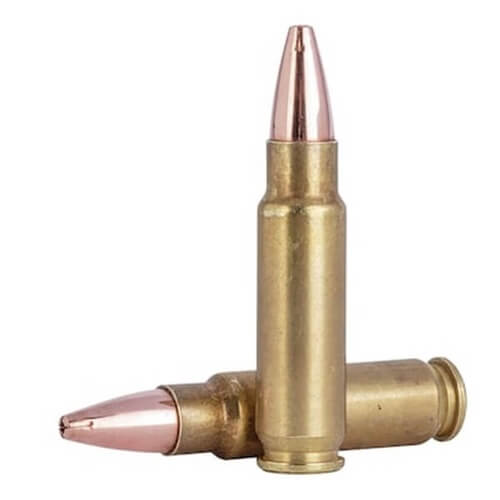

5.7x28mm Ammunition
The 5.7X28mm is a thoroughly modern round for a very modern concept.
The 5.7x28mm caliber was designed in the early 1990s and was produced by FN Herstal.
FN Herstal built the round for use in their new P90 personal defense weapon and the FN 5.7 pistol.
The 5.7x28mm round sit comfortable in between a pistol and rifle round in terms of power, range, recoil, and penetrative ability.
This soft shooting, flat round is quite small and allows for high capacities without adding weight or obtrusive sized magazines to a weapon.
The 5.7x28mm round is superbly fast, even from a handgun like the FN 5.7 it’s capable of achieving velocities of 1890 feet per second.
This makes it hit with nearly the same foot pounds of energy as a 124 grain 9mm round.
The 5.7x28mm has become popular for target shooting, self-defense, and even hunting small varmint and predators.
The round has seen itself adopted by numerous military and police forces around the world.
Most notably the United States Secret Service utilizes the round in the FN P90.
The 5.7x28mm is a fascinating round that has proven to be reliable and capable for a variety of pursuits.
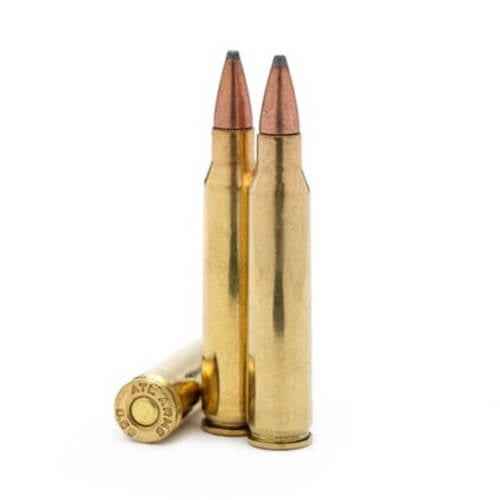

5.56 / .223 Remington Ammunition
The 5.56 NATO and 223 Remington rounds are brothers who share the same Mother.
The 223 Remington is the older brother and was designed in 1962 by Remington Arms.
The round was being specifically designed for the military and their desire for a lightweight combat rifle.
The round would eventually evolve and become the 5.56 x 45mm NATO. This round was adopted in the 1970s and became and remains the standard NATO assault rifle round.
The rounds look and function identically.
The difference comes in the pressure the rounds create and function with.
A .223 feels most of its pressure in the center of the case. A 5.56 feels pressure near the throat. This is important for specific weapons.
Weapons chambered in 5.56 can fire both 5.56 and 223 REM.
Weapons chambered in 223 REM should only fire .223 REM to maintain consistent function.
The 5.56 NATO and 223 REM are lightweight, low recoiling rounds that are extremely popular.
The round has an effective range of over 500 yards through a rifle.
The round is perfect for shooters of any experience level because its light concussion and low recoil.
These rounds are in use by most western militaries, as well as most police forces in the United States.
They are sufficient for hunting medium to small game, and are popular for home defense in AR15 platform rifles.
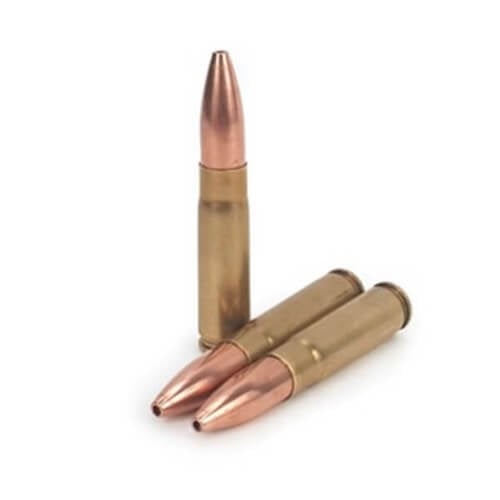

300 Blackout Ammunition
300 AAC Blackout also known as 300 Blackout or 300 BLK, is a modern round made for tactical rifles.
Famed suppressor manufacturer AAC developed the round.
The 300 Blackout was designed to remain potent when fired from a short barrel, and be easily suppressed.
The 300 Blackout will remain potent when fired from a barrel as short as 9 inches.
The 300 Blackout will also run reliably with a short barrel and suppressor when using subsonic ammunition.
The use of subsonic ammunition eliminates the tell-tale supersonic crack still heard when using a suppressor.
300 Blackout projectile weights can vary from lightweight, supersonic 110 grain projectiles too heavy, subsonic 220 grain projectiles.
The 300 Blackout is a newer round, but has gained a large following in just a short period.
As suppressors and short barrel rifles grow in popularity the 300 Blackout only trend upwards in popularity.
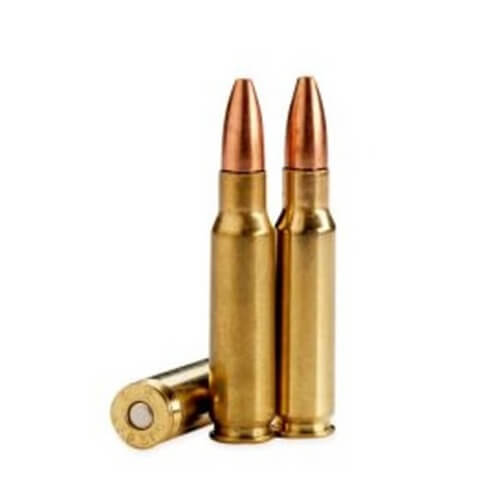

6.8 SPC Ammunition
The 6.8 SPC was designed in coordination between Remington, the U.S. Army Marksmanship Unit, and the United States Special Operation command for the Enhanced Rifle Program.
It was designed to potentially replace the 5.56 NATO cartridge with Special Operations personnel.
The intent was to create a round that outperformed the 5.56.
The 6.8 SPC caliber was designed between 2002 and 2004 and utilized a .277 caliber projectile and a necked down 30 Remington case.
The 6.8 SPC has only a slightly higher recoil than the 5.56, but offer greater accuracy and terminal ballistics.
While the military retained the 5.56 NATO round the 6.8 SPC gained popularity in the civilian market.
The 6.8 SPC is an effective round for competitions due to its enhanced accuracy and being available in the AR platform.
The 6.8 SPC is also well reputed for its take down power and its effectiveness against medium game.
The 6.8 SPC is an excellent choice for hunters looking to use an AR-15 rifle.
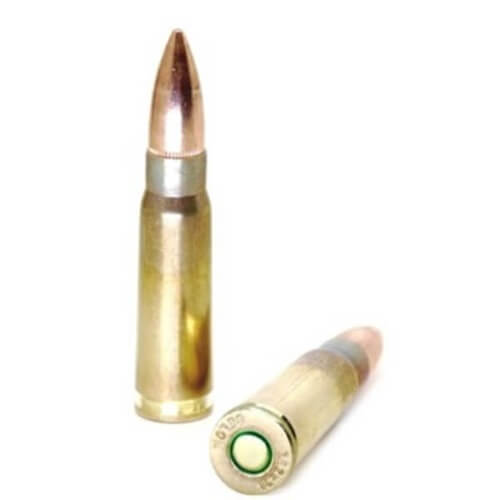

7.62x39mm Ammunition
The 7.62x39mm is one of the most popular rifle cartridges in the world.
Designed by the Soviet Union in 1944, the 7.62x39mm would go to become their main assault rifle cartridge for over 30 years.
Designed by lessons learned in World War 2 the 7.62x39mm is designed for engagements 300 meters and closer.
The 7.62x39mm caliber became popular as the Soviet Union began exporting the round, and the SKS and AKM rifles.
The AK became one of the most popular rifles and the 7.62x39mm ammunition exploded in popularity in everywhere from the Eastern Bloc to South America.
The 7.62x39mm cartridge is known for its relatively low recoil and heavy hitting characteristics.
Although it’s range is limited, inside 300 yards the round can easily penetrate through hard barriers.
This includes wood, cinder blocks, and thin metal.
The round is most commonly used by AK enthusiasts in the United States as a recreational and home defense platform.
It’s also a very capable hunting round for hunting medium game at close range.
The 7.62x39mm is a well-designed round for its intended range.
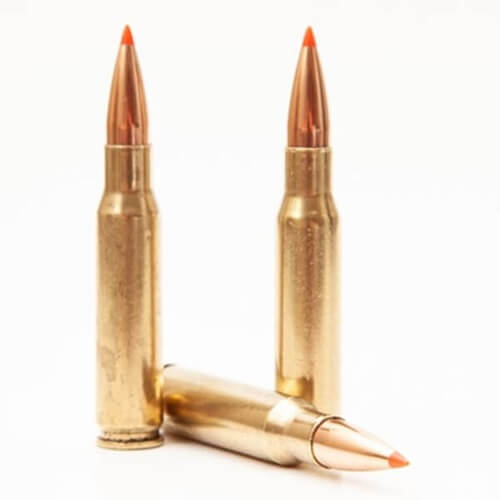

7.62 / .308 Winchester Ammunition
The 7.62 NATO and 308 Winchester cartridges are very similar in dimension. Both are 30 caliber projectiles with a 51mm case.
The 7.62 NATO is the preferred 30 caliber round of NATO militaries and the 308 Winchester is most commonly found in hunting rifles.
The rounds are nearly identical, but not completely.
7.62 NATO brass is thicker to ultimately make the brass stronger and to establish a maximum chamber pressure of 50,000 PSI.
This way it could be used in a variety of different weapons that NATO countries utilized.
The .308 Winchester did not have to thicken the case, and standard loads have a max chamber pressure of 60,000 PSI.
Both rounds are heavy hitting full powered rifle cartridges that are excellent choices for moderate range shooting.
The 308 and 7.62 NATO are solid performers out to 800 yards and talented shooters can reach out to a 1000 yards with it.
These rounds are generally considered well purposed for an intermediate sniper and for hunting medium to large North American game.
The .308 Winchester will give the most options for projectile type and expansive ammunition.
7.62 NATO tends to be simple ball ammunition.
In most cases 308 Win and 7.62 NATO can interchange since most civilian rifles are chambered in 308 Winchester.
It’s generally not advisable to fire .308 Win in a rifle marked and designed for 7.62 NATO.
It could potentially lead to reliability issues and potentially harm your rifle.
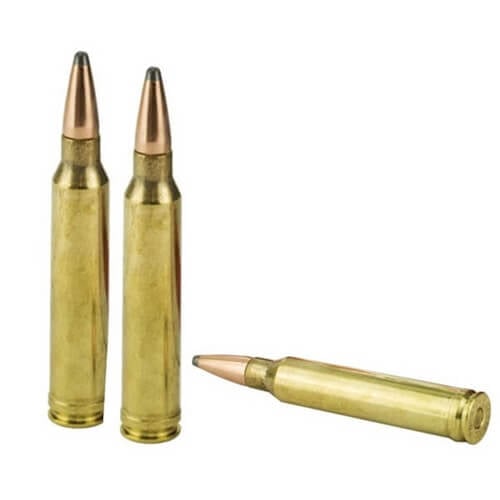

300 WIN MAG Ammunition
Designed by Winchester Repeating Arms Company in 1963 the 300 Winchester Magnum was a magnum powered cartridge in a standard rifle action.
The case was based on the 375 H&H Magnum, but heavily modified.
The case was necked down to accept a 30 caliber projectile.
Blown out to accommodate more case capacity, and shorted for use in standard bolt action rifles.
The 300 Win Mag caliber was an immediate success. It proved to be accurate, reliable, and hard hitting.
The 300 Win Mag is a very effective long range cartridge for hunting and tactical applications.
As a hunting round it can take any North American Game animal.
This includes elk and bear.
Chris Kyle utilized the 300 Win Mag as his favored cartridge while acting as a sniper in Iraq.
The 300 Win Mag offers superior ballistics and stopping power when compared to the 308.
It is also more accurate and stable when taking long range shots.
The 300 Winchester Magnum is a go getter, and remains one of the most popular powerhouse rounds.
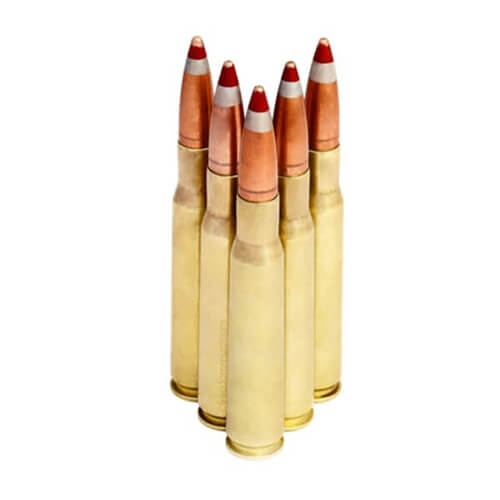

50 BMG Ammunition
The 50 BMG, or 50 Browning Machine Gun, is a massive round in both size and power.
The 50 BMG was designed in the shadow of World War 1 for the still serving Browning M2 Machine Gun.
The round and accompanying machine gun was designed for defeating the rudimentary World War 1 tank.
Since then the 50 BMG is still found in machine gun platforms, but has evolved into the rifle realm as well.
50 BMG rifles are used by long range shooters who want to reach out to a mile or even further.
The military and even some police forces use the 50 BMG as an anti-material weapon.
It serves in a limited capacity with EOD for detonating or disabling explosives.
The 50 BMG is an immensely powerful round that is not suited for hunting.
The 50 BMG is best suited for competition, recreation, and tactical use.
It fires a round that is a half inch in diameter and that can weigh up to 800 grains, at almost 3,000 feet per second.
The 50 BMG is the premier big bore, long range, rifle round.
Summary
In this Firearm Blog Article, we covered some of the most popular pistol and rifle ammunition calibers used by firearm enthusiasts today.
For pistols, calibers like 9mm, .45 ACP, and .380 ACP are favored for their balance of power, reliability, and versatility in self-defense and target shooting.
On the rifle side, calibers such as 5.56/.223 Remington, .308 Winchester, and 7.62x39mm are widely used for their accuracy, range, and performance in both tactical and hunting scenarios.
Understanding these calibers and their specific uses can help you make informed choices, whether you're selecting ammo for personal defense, hunting, or recreational shooting.
